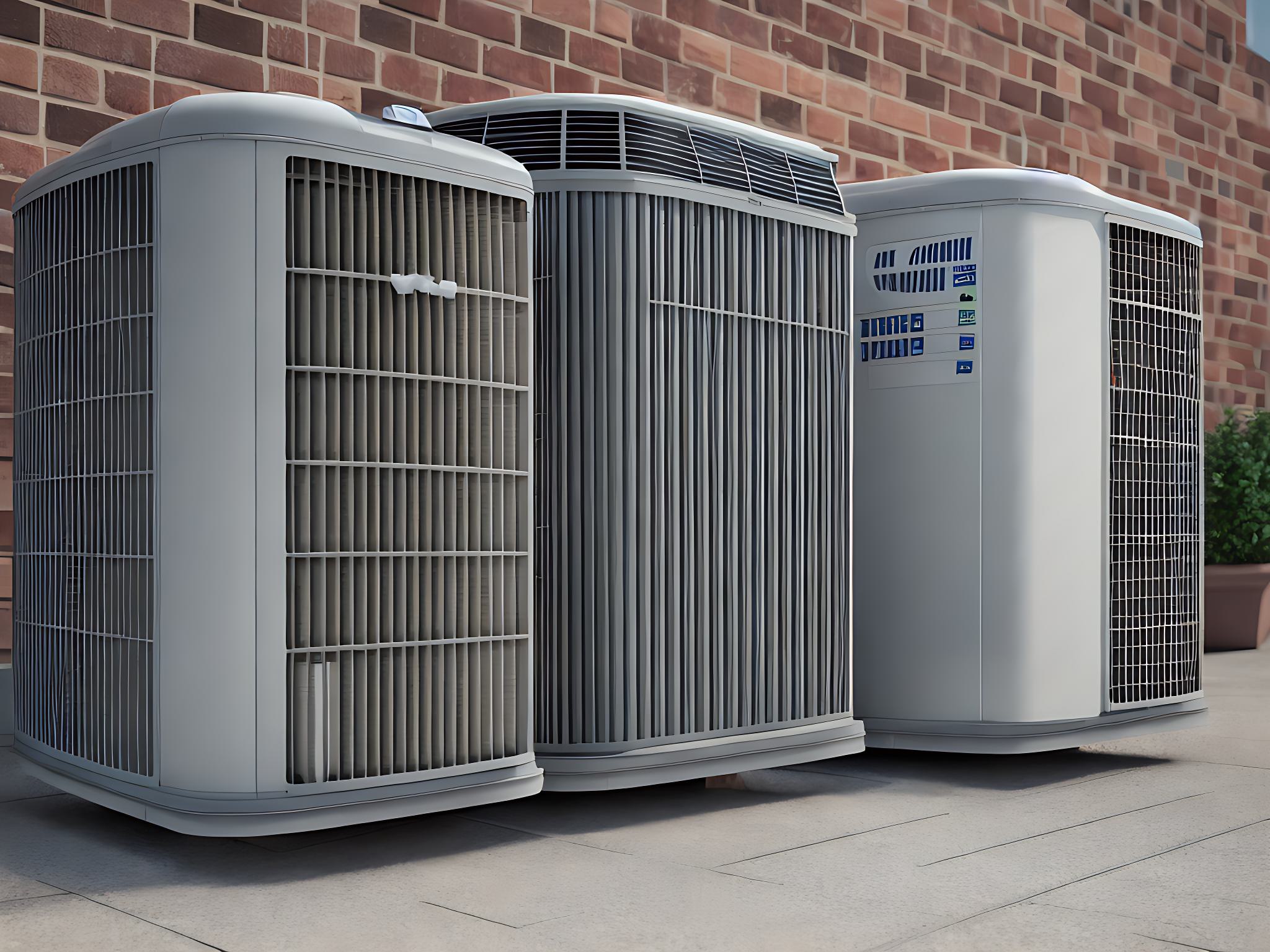Developing an Effective HVAC Marketing Strategy

Contents
- Understanding Your Target Audience: Key to Building a Successful HVAC Marketing Plan
- Analyzing Your Competition: Learning from Their Strengths and Weaknesses
- Crafting a Compelling Brand Message: Telling Your HVAC Business Story
- Identifying the Right Marketing Channels for Your HVAC Business
- Leveraging Social Media Marketing to Boost Your HVAC Business
- Creating Engaging Content for Your HVAC Marketing Campaigns
- Implementing Effective Search Engine Optimization (SEO) Strategies for Your HVAC Business
- Optimizing Your Website: Making it User-Friendly and Conversion-Driven
- Measuring the Success of Your HVAC Marketing Strategy: Key Metrics and Analytics
Developing an Effective HVAC Marketing Strategy
As an HVAC business owner, you know how important it is to have a marketing strategy that drives sales and builds your brand reputation. A successful marketing plan requires careful planning, research, and execution. In this article, we’ll share expert tips for building a strong HVAC marketing strategy that resonates with your target audience and generates revenue for your business.
Understanding Your Target Audience: Key to Building a Successful HVAC Marketing Plan
The first step in creating an effective marketing plan is to understand your target audience. Who are the people that need your HVAC services? What are their pain points? What motivates them to choose one HVAC company over another? By answering these questions, you can create a buyer persona that represents your ideal customer. This persona will guide your marketing messaging, content, and channel selection.
It's important to note that your target audience may vary depending on the type of HVAC services you offer. For example, if you specialize in commercial HVAC systems, your target audience may be building owners, property managers, and facility directors. On the other hand, if you focus on residential HVAC services, your target audience may be homeowners and renters. Understanding the specific needs and pain points of each audience will help you tailor your marketing efforts to effectively reach and engage them.
Analyzing Your Competition: Learning from Their Strengths and Weaknesses
Next, it’s critical to analyze your competition. Study their marketing strategies and tactics, and identify areas where you can differentiate your HVAC business. Look for gaps in their services, customer complaints, or negative reviews that you can address with your marketing campaigns. Knowing your competition’s strengths and weaknesses can help you position your business in a way that stands out from the crowd.
Additionally, analyzing your competition can also provide insight into industry trends and best practices. By keeping up with what your competitors are doing, you can stay informed about new technologies, services, and marketing techniques that may be relevant to your business. This can help you stay ahead of the curve and ensure that your HVAC business remains competitive in the long run.
Crafting a Compelling Brand Message: Telling Your HVAC Business Story
Your brand message is the core of your marketing strategy. It should communicate what your HVAC business stands for, what sets you apart from your competitors, and how you can solve your customers’ problems. Use your brand message consistently across all your marketing channels, including your website, social media, and other advertising platforms.
One way to craft a compelling brand message is to focus on your company’s unique selling proposition (USP). Your USP is what makes your HVAC business different from others in the industry. It could be your exceptional customer service, your use of eco-friendly products, or your expertise in a particular area of HVAC. By highlighting your USP in your brand message, you can attract customers who are looking for the specific services or qualities that your business offers.
Identifying the Right Marketing Channels for Your HVAC Business
There are numerous marketing channels to choose from, including social media, email marketing, PPC advertising, and SEO. Each channel has its strengths and weaknesses, and not all channels will be right for your HVAC business. Consider your buyer persona and the types of media channels they are most likely to engage with. Focus on the channels that will generate the best ROI for your business.
It's important to regularly evaluate the performance of your chosen marketing channels and adjust your strategy accordingly. Keep track of metrics such as click-through rates, conversion rates, and cost per acquisition to determine which channels are providing the most value. Don't be afraid to experiment with new channels or tactics, but always measure their effectiveness before committing significant resources.
Leveraging Social Media Marketing to Boost Your HVAC Business
Social media marketing can be a powerful way to engage with your target audience and build your brand reputation. Platforms like Facebook, Twitter, and Instagram provide a low-cost way to share content, customer reviews, and promotions with your followers. Plus, social media algorithms reward businesses that post frequently and engage with their followers regularly.
However, it's important to remember that social media marketing is not a one-size-fits-all solution. As an HVAC business, you may find that certain platforms are more effective than others in reaching your target audience. For example, Facebook may be a great platform for sharing educational content and promotions, while Instagram may be better suited for showcasing your work through visually appealing photos and videos.
Creating Engaging Content for Your HVAC Marketing Campaigns
Creating high-quality, engaging content is essential for any HVAC marketing strategy. This can include blog posts, case studies, white papers, videos, infographics, and more. Focus on creating content that educates and informs your target audience about the benefits of your HVAC solutions. By providing value upfront, you can build trust and establish your business as a thought leader in your industry.
One effective way to create engaging content for your HVAC marketing campaigns is to incorporate customer testimonials and success stories. This can help potential customers see the real-world benefits of your solutions and build trust in your brand. Additionally, consider using interactive content such as quizzes or calculators to engage your audience and provide personalized insights. By continually creating and sharing valuable content, you can attract and retain customers, and ultimately drive business growth.
Implementing Effective Search Engine Optimization (SEO) Strategies for Your HVAC Business
SEO is a critical component of any HVAC marketing strategy. By optimizing your website and content for search engines like Google, you can attract more organic traffic to your site and increase conversions. Some key SEO tactics include conducting keyword research, optimizing meta descriptions and title tags, and building high-quality backlinks to your site.
In addition to these tactics, it's important to regularly update your website with fresh, relevant content. This can include blog posts, case studies, and industry news. By consistently providing valuable information to your audience, you can establish your business as a thought leader in the HVAC industry and improve your search engine rankings.
Optimizing Your Website: Making it User-Friendly and Conversion-Driven
Your website is usually the first impression that potential customers have of your HVAC business. Therefore, it’s essential to make your site easy to navigate, visually appealing, and optimized for conversions. Use clear calls-to-action (CTAs), make your pricing and contact information easy to find, and ensure that your site is mobile-friendly.
In addition to these key elements, it’s also important to regularly update your website with fresh content. This can include blog posts, case studies, and customer testimonials. Not only does this help with search engine optimization (SEO), but it also shows potential customers that your business is active and engaged in the industry. Additionally, consider implementing live chat or chatbot features to provide immediate assistance to website visitors and improve their overall experience.
Measuring the Success of Your HVAC Marketing Strategy: Key Metrics and Analytics
Finally, it’s crucial to measure the success of your HVAC marketing campaigns. Use tools like Google Analytics and social media analytics platforms to track your website traffic, engagement rates, and conversion rates. Use data to refine your messaging and tactics over time, so you can continuously optimize your marketing strategy for maximum ROI.
Creating an effective HVAC marketing strategy requires careful planning, execution, and analysis. By understanding your target audience, analyzing your competition, and leveraging the right marketing channels, you can build a marketing plan that drives sales, builds your brand reputation, and establishes your HVAC business as a leader in your industry.
One important metric to consider when measuring the success of your HVAC marketing strategy is customer retention rate. This metric measures the percentage of customers who continue to use your services after their initial purchase. By tracking this metric, you can determine the effectiveness of your customer service and the overall satisfaction of your customers. A high customer retention rate indicates that your marketing efforts are not only attracting new customers but also keeping them satisfied and loyal to your business.


